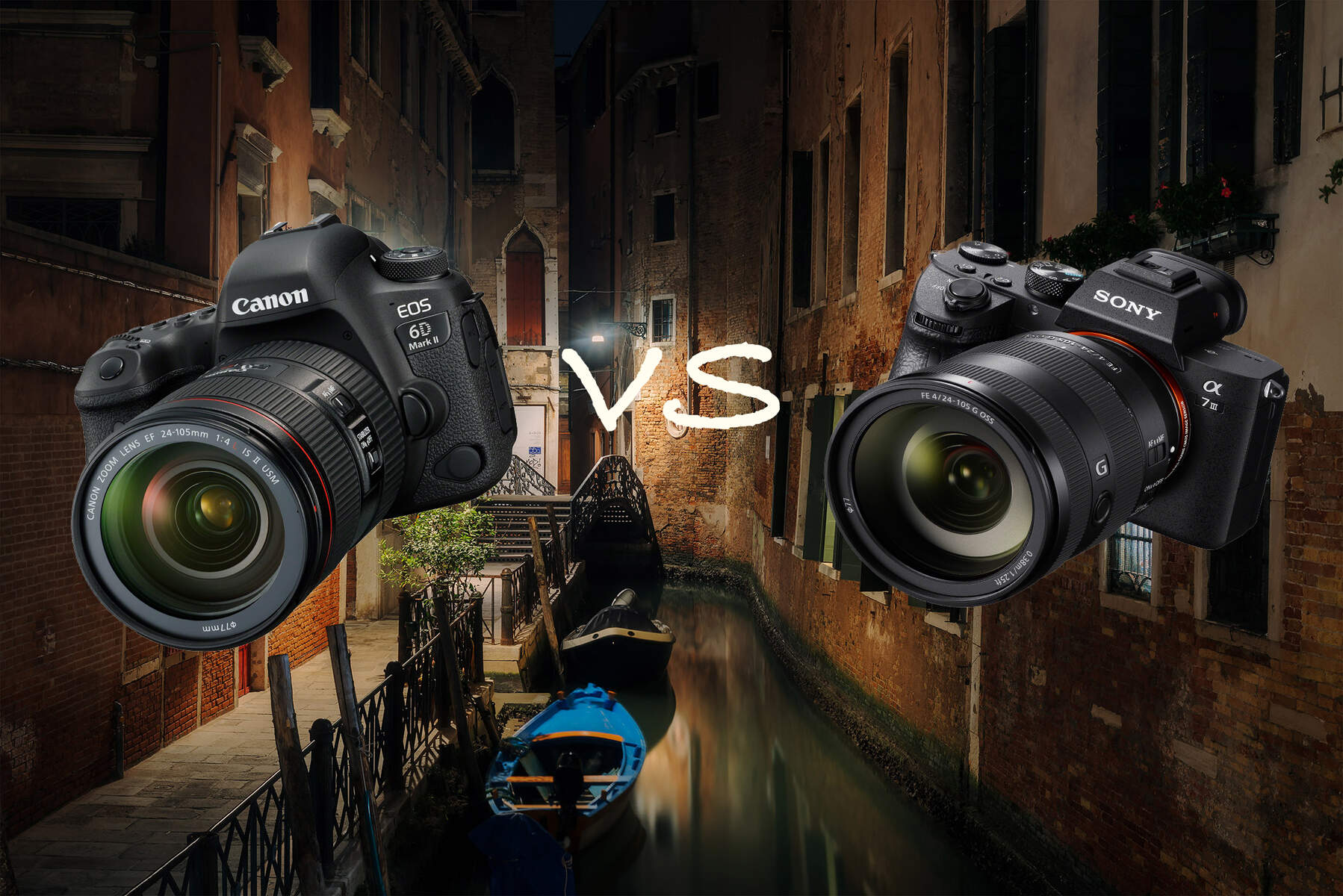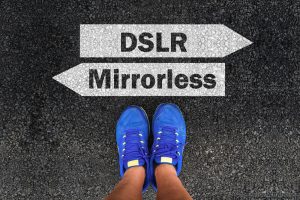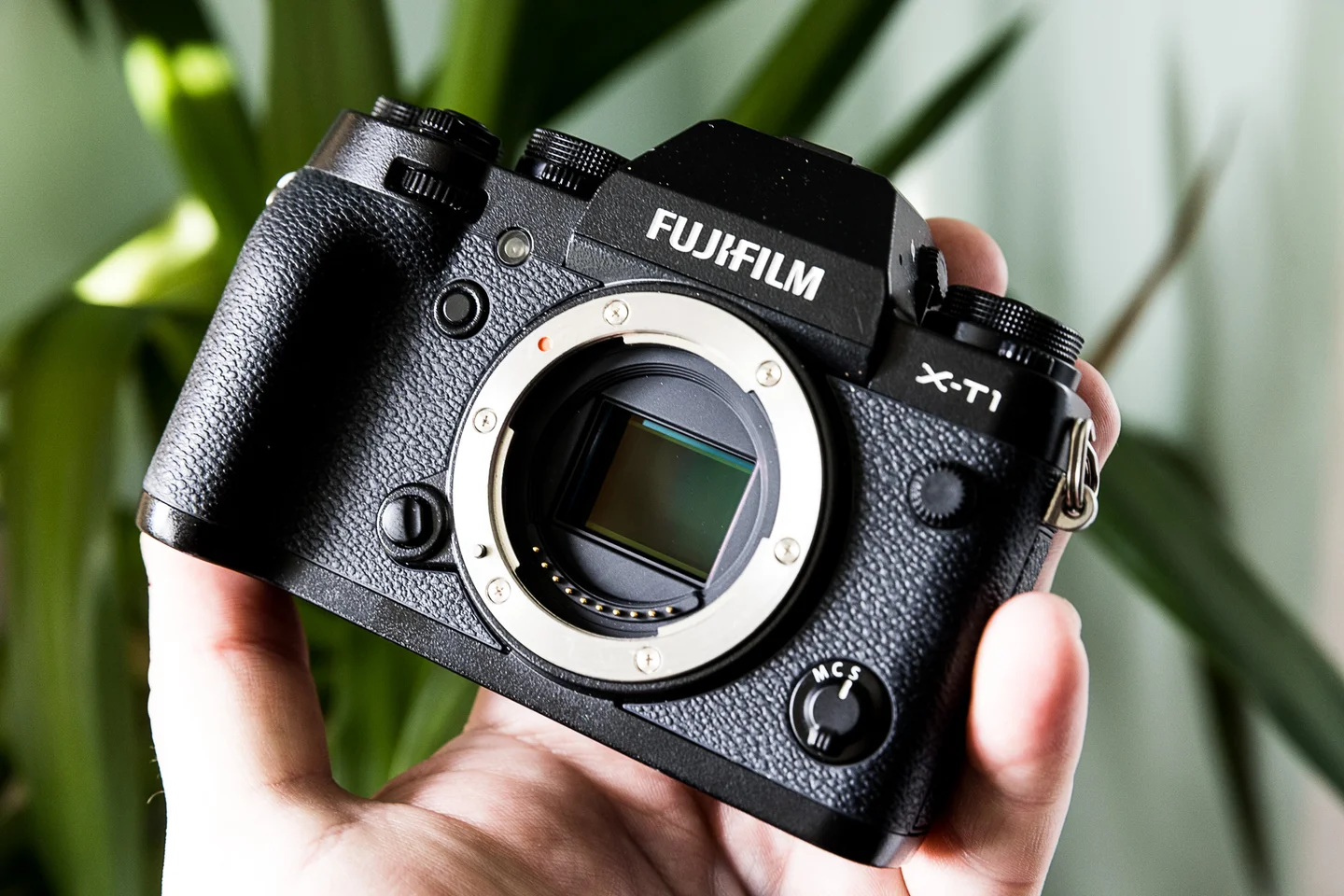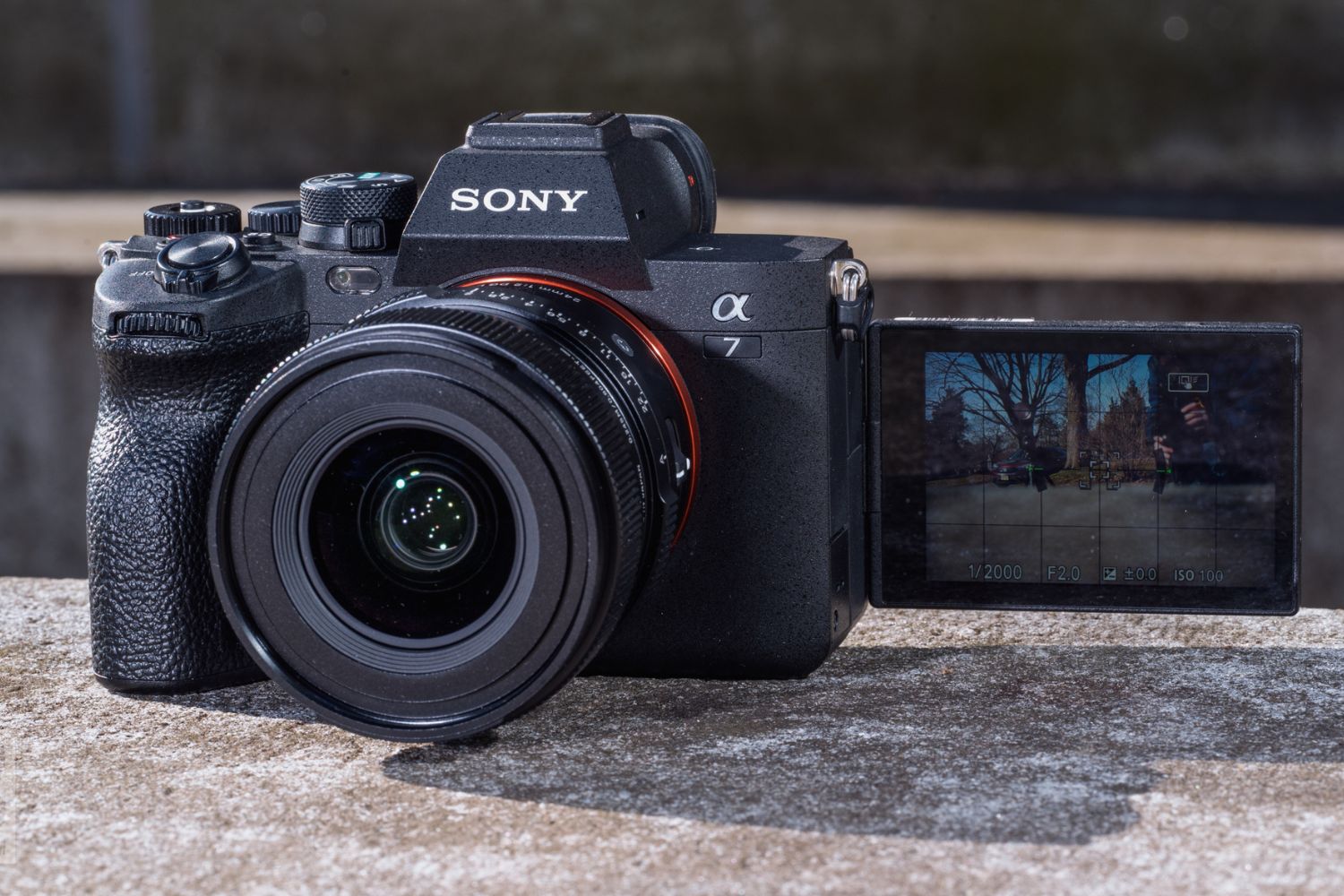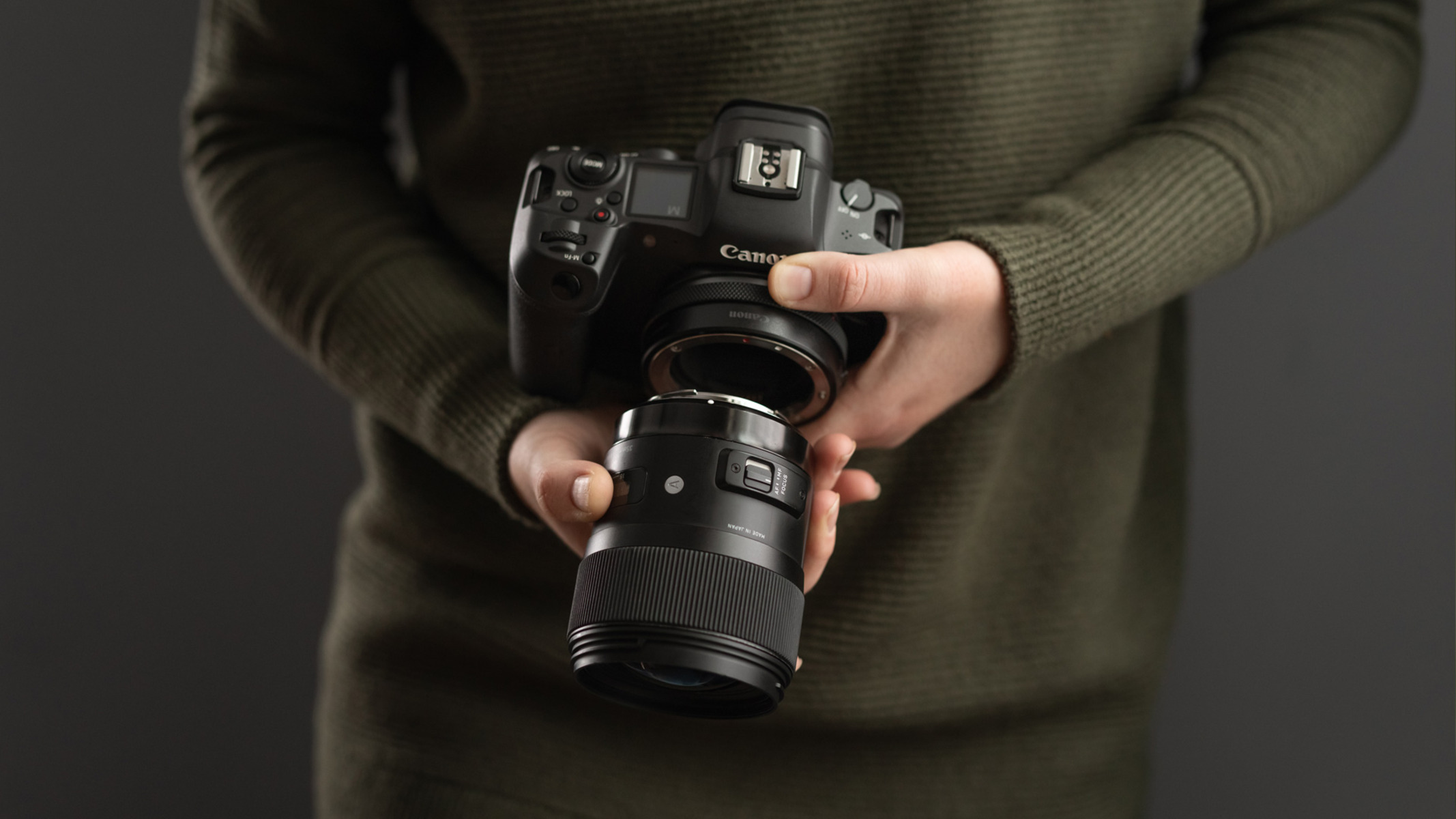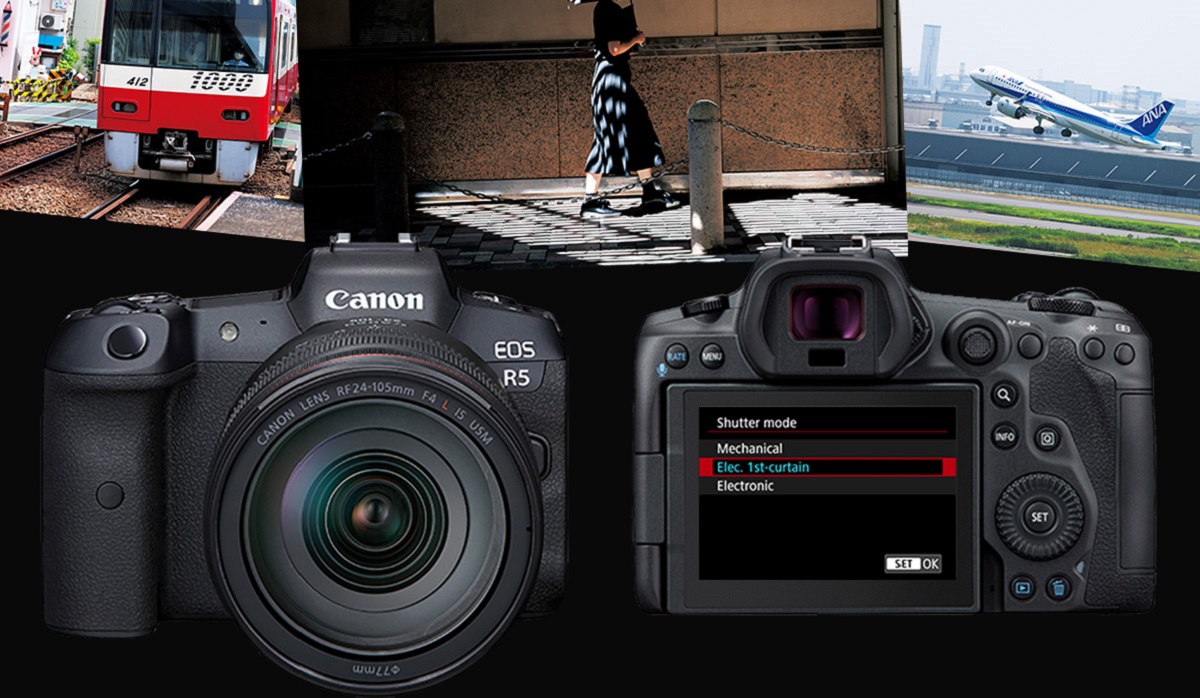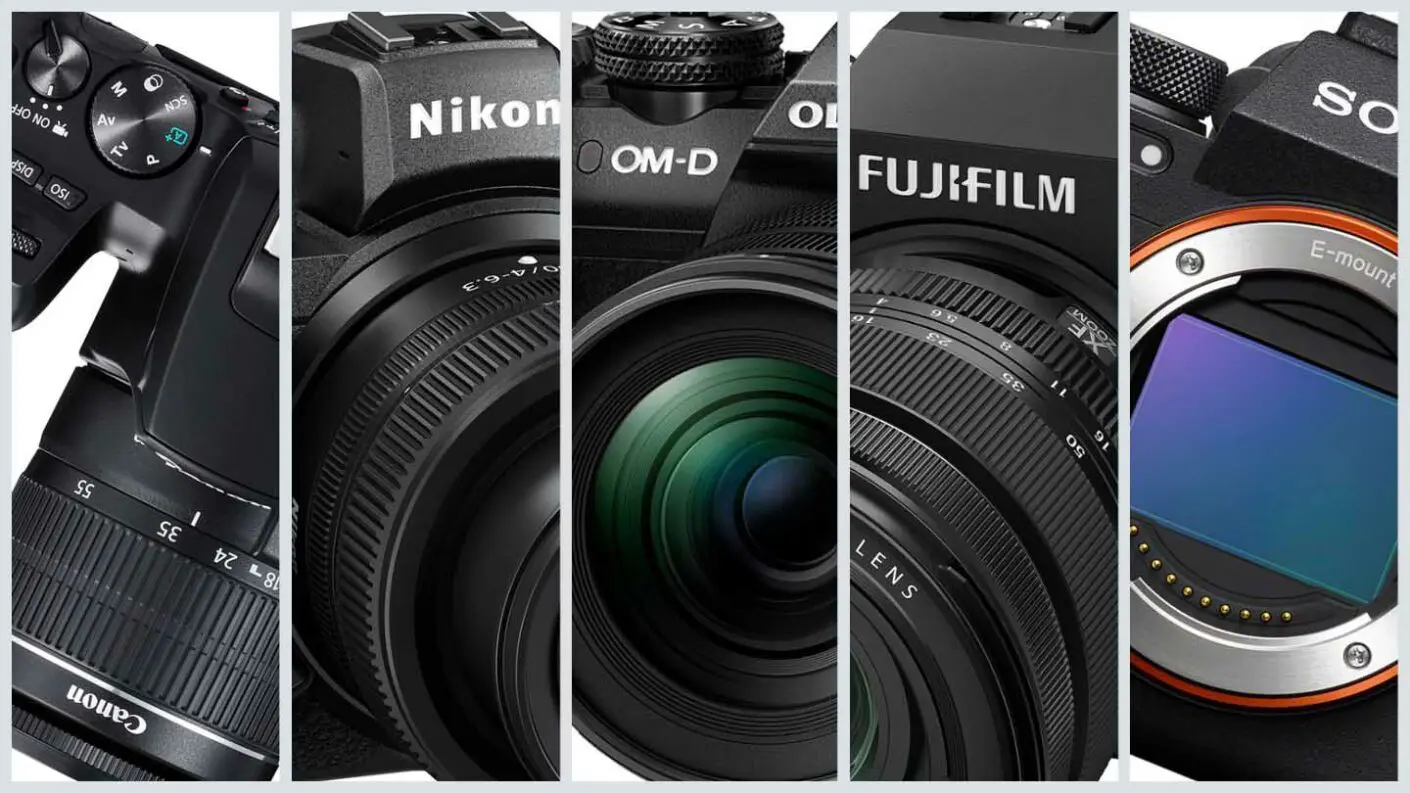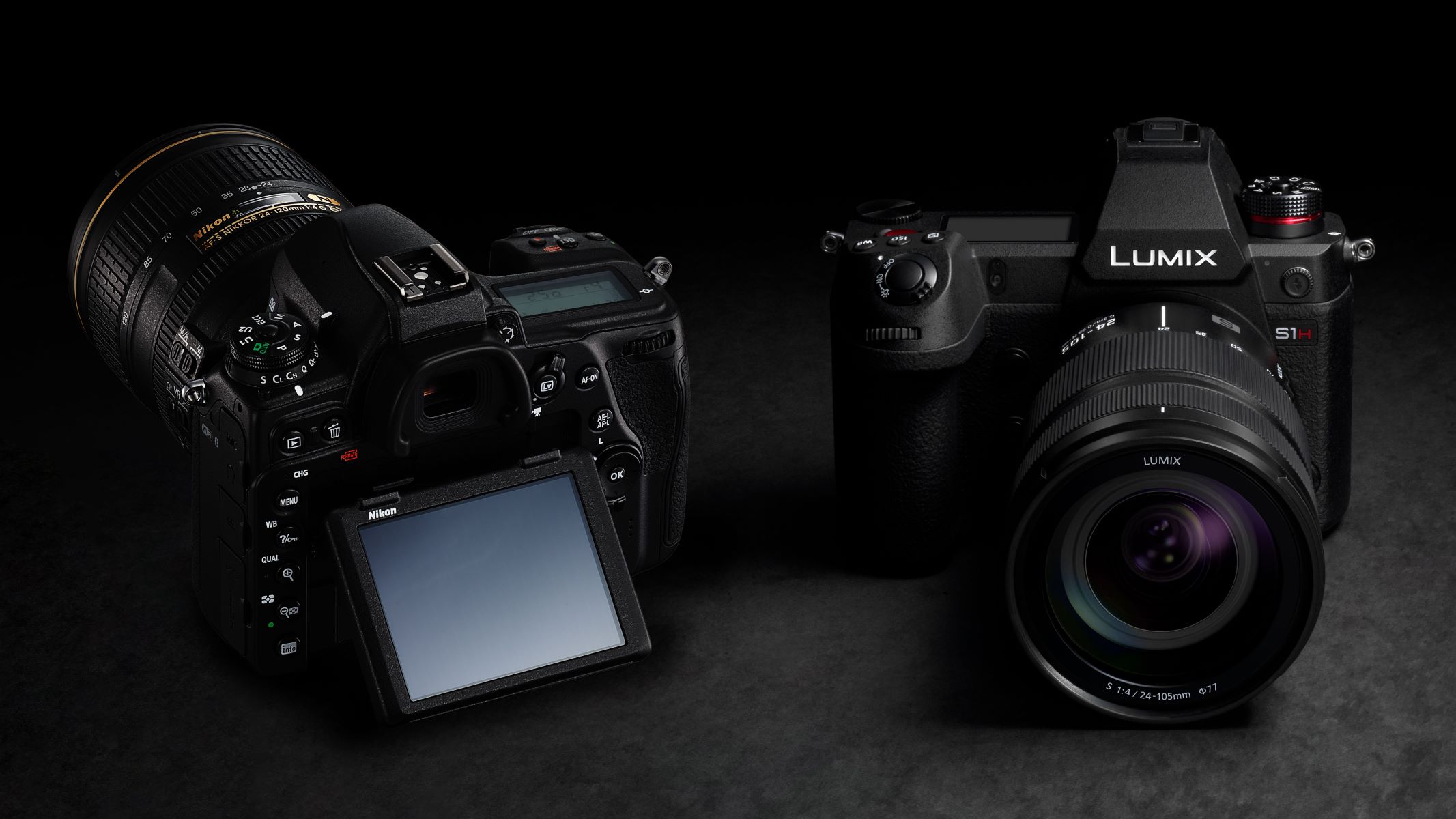Introduction
When it comes to capturing life's fleeting moments, the choice between a mirrorless camera and a DSLR (digital single-lens reflex) can be a perplexing conundrum for many photography enthusiasts. Both camera types have their own set of strengths and weaknesses, making the decision a matter of personal preference and specific shooting requirements. Understanding the nuances of each system is crucial in making an informed choice that aligns with one's creative vision and practical needs.
In this comprehensive comparison, we will delve into the key factors that differentiate mirrorless cameras from DSLRs, shedding light on their respective advantages and limitations. From size and weight to autofocus performance, image quality, battery life, lens options, viewfinder technology, video capabilities, and price, each aspect will be meticulously scrutinized to provide a holistic view of these two camera formats. By the end of this exploration, you will be better equipped to discern which camera type best suits your photographic pursuits.
Let's embark on this enlightening journey to unravel the intricacies of mirrorless cameras and DSLRs, empowering you to make an informed decision that elevates your photography endeavors.
Size and Weight
One of the most conspicuous disparities between mirrorless cameras and DSLRs lies in their physical dimensions and weight. Mirrorless cameras, characterized by their compact and lightweight design, have revolutionized the photography landscape by offering portability without compromising image quality. Their slim profile and reduced bulk make them an appealing choice for photographers who prioritize mobility and convenience. On the other hand, DSLRs, with their optical viewfinders and internal mirrors, tend to be bulkier and heavier, which may pose challenges during extended shooting sessions or travel expeditions.
For photographers who frequently embark on outdoor adventures or engage in street photography, the diminutive form factor of mirrorless cameras confers a distinct advantage. The ability to maneuver swiftly and discreetly, especially in bustling urban settings or remote natural landscapes, can often make the crucial difference in capturing candid moments or fleeting expressions. Furthermore, the compact nature of mirrorless cameras facilitates inconspicuous shooting, enabling photographers to blend seamlessly into their surroundings and capture authentic, unguarded moments.
Despite the compactness of mirrorless cameras, it is important to note that the size and weight advantage may vary across different models and brands. Some mirrorless cameras may feature larger grips or protruding electronic viewfinders, slightly diminishing their portability. Conversely, certain DSLR models have been engineered to be more lightweight and ergonomic, narrowing the gap in terms of bulkiness between the two camera types.
Ultimately, the decision between a mirrorless camera and a DSLR hinges on the individual photographer’s preferences and shooting requirements. While mirrorless cameras excel in portability and discreetness, DSLRs may offer a better grip and handling for photographers with larger hands or those accustomed to the traditional heft of professional cameras.
Autofocus
The autofocus performance of a camera is a pivotal aspect that directly influences the speed, accuracy, and reliability of capturing sharp, well-focused images. In this realm, both mirrorless cameras and DSLRs showcase distinct approaches to autofocus technology, each with its own set of advantages and considerations.
Mirrorless cameras have made remarkable strides in autofocus innovation, leveraging advanced contrast-detection and phase-detection autofocus systems to deliver swift and precise focusing capabilities. The absence of a mirror allows these cameras to employ on-sensor autofocus, enabling rapid focus acquisition across the entire frame. Additionally, many mirrorless cameras feature eye-detection and subject-tracking autofocus modes, empowering photographers to effortlessly capture subjects in motion or maintain sharp focus on a subject’s eyes, even in challenging shooting conditions.
Conversely, DSLRs traditionally utilize phase-detection autofocus, facilitated by a dedicated autofocus module within the camera body. This technology excels in swiftly tracking moving subjects, making DSLRs a popular choice for sports, wildlife, and action photography. However, the reliance on a separate autofocus module necessitates precise calibration and alignment, and the effectiveness of phase-detection autofocus may be influenced by the specific lens used.
It is important to note that the autofocus performance of both mirrorless cameras and DSLRs is contingent on the specific model and brand. Some high-end mirrorless cameras now feature hybrid autofocus systems that amalgamate the benefits of phase-detection and contrast-detection autofocus, mitigating the limitations associated with each approach. DSLR manufacturers have also endeavored to enhance autofocus performance, particularly in low-light conditions, to rival the swift and accurate focusing capabilities of mirrorless cameras.
When evaluating autofocus, photographers should consider their predominant genres of photography, whether it be portraits, landscapes, sports, or low-light scenarios. The autofocus system’s ability to swiftly and accurately lock onto subjects, track motion, and adapt to diverse shooting conditions is an indispensable factor in determining the suitability of a camera for a photographer’s specific needs.
Image Quality
When it comes to photography, image quality stands as the cornerstone of visual storytelling and artistic expression. Both mirrorless cameras and DSLRs are capable of delivering exceptional image quality, albeit through distinct technological pathways.
Mirrorless cameras, with their electronic viewfinders and on-sensor autofocus, offer real-time exposure previews and seamless integration of advanced image processing algorithms. This provides photographers with an accurate representation of the final image before it is captured, enabling precise adjustments to exposure, white balance, and creative effects directly through the viewfinder. Additionally, the absence of a mirror mechanism eliminates the potential for mirror-induced vibrations, contributing to sharper images, especially at slower shutter speeds.
On the other hand, DSLRs, with their optical viewfinders and mirror-based autofocus systems, provide a direct optical view of the scene, unmediated by electronic displays. This traditional approach has garnered favor among photographers who prefer the optical clarity and immediacy of an optical viewfinder. Furthermore, the optical viewfinder of a DSLR does not suffer from lag or battery dependency, ensuring a consistent viewing experience regardless of ambient lighting conditions.
When evaluating image quality, factors such as sensor size, resolution, dynamic range, and low-light performance play pivotal roles. Both mirrorless cameras and DSLRs are available in a spectrum of sensor sizes, ranging from full-frame to APS-C and Micro Four Thirds, each with its own set of advantages and considerations. The resolution of the sensor, coupled with the quality of the lens, influences the level of detail and sharpness achievable in the captured images, a crucial consideration for photographers who demand high-resolution output.
Low-light performance, often gauged by a camera’s ability to produce clean, noise-free images at high ISO settings, is an essential aspect of image quality, particularly for photographers who engage in indoor, nighttime, or astrophotography. The technological advancements in sensor design and image processing have culminated in both mirrorless cameras and DSLRs exhibiting commendable low-light performance, with some mirrorless cameras leveraging in-body image stabilization to further augment their low-light capabilities.
Ultimately, the pursuit of exceptional image quality is a shared objective for both mirrorless cameras and DSLRs, with each system offering distinctive features and technological prowess that cater to the discerning needs of photographers.
Battery Life
The longevity of a camera’s battery life is a crucial consideration for photographers, especially those who embark on extensive photo shoots or travel to remote locations where access to charging facilities may be limited. In this realm, the disparity between mirrorless cameras and DSLRs is notable, with each system presenting distinct power management capabilities and considerations.
Mirrorless cameras, owing to their electronic viewfinders, on-sensor autofocus, and continuous display of live view, tend to consume more power compared to DSLRs with optical viewfinders. The electronic components in mirrorless cameras necessitate a steady supply of power to sustain real-time image previews, autofocus operations, and electronic viewfinder functionality. Consequently, the battery life of mirrorless cameras is generally shorter than that of DSLRs, often requiring photographers to carry spare batteries or employ power-saving strategies to mitigate the risk of running out of power during extended shooting sessions.
Conversely, DSLRs, with their optical viewfinders and intermittent use of the rear LCD screen, are renowned for their superior battery life. The optical viewfinder, which relies on ambient light for visibility, does not demand a continuous power supply, resulting in more efficient utilization of the camera’s battery. This advantage makes DSLRs an appealing choice for photographers who prioritize prolonged shooting sessions without the need for frequent battery changes or recharges.
It is important to note that advancements in battery technology and power management systems have led to improvements in the battery life of mirrorless cameras. Some mirrorless camera models now feature high-capacity batteries and energy-efficient components, narrowing the gap between mirrorless cameras and DSLRs in terms of endurance. Additionally, the advent of USB charging and power banks has provided photographers with convenient alternatives for replenishing the battery life of mirrorless cameras while on the move.
When evaluating battery life, photographers should assess their typical shooting scenarios and the feasibility of accessing charging facilities. For photographers who engage in extensive outdoor photography or travel to remote locales, the extended battery life of a DSLR may offer a practical advantage. Conversely, photographers who prioritize portability and lightweight gear may find the evolving battery life of mirrorless cameras to be sufficient for their needs, especially when coupled with the convenience of carrying spare batteries or utilizing portable charging solutions.
Lens Options
The array of available lenses is a pivotal consideration for photographers, influencing their creative flexibility, visual storytelling capabilities, and the adaptability of their camera system to diverse shooting scenarios. Both mirrorless cameras and DSLRs offer an extensive selection of lenses, each with its own distinct characteristics and compatibility considerations.
Mirrorless cameras have garnered acclaim for their adaptability to a wide range of lenses, facilitated by the absence of a mirror box and a shorter flange distance. This design allows for the seamless integration of lens adapters, enabling photographers to utilize legacy lenses from various manufacturers, expanding their creative horizons and leveraging the unique optical properties of vintage and specialty lenses. Additionally, the compact nature of mirrorless cameras has spurred the development of compact, high-performance lenses that cater to the demands of travel, street, and documentary photography.
On the other hand, DSLRs boast a rich lineage of lenses, accumulated over decades of optical innovation and technological refinement. The extensive catalog of native lenses, spanning diverse focal lengths, apertures, and optical designs, offers photographers an expansive toolkit to articulate their creative vision. Furthermore, the robust mechanical interface of DSLRs, characterized by a precise and tactile lens mount, ensures a secure connection with the camera body, minimizing the potential for communication errors or compatibility issues.
When evaluating lens options, photographers should consider factors such as autofocus performance, optical stabilization, weather sealing, and the availability of specialized lenses tailored to their preferred genres of photography. Both mirrorless cameras and DSLRs are equipped with lenses featuring advanced autofocus mechanisms and optical stabilization systems, contributing to the seamless capture of sharp, well-focused images, especially in challenging shooting conditions.
The advent of mirrorless cameras has catalyzed the development of innovative lenses, including compact prime lenses, high-speed zoom lenses, and optically refined portrait and macro lenses, designed to complement the diminutive form factor and advanced imaging capabilities of mirrorless camera bodies. Conversely, DSLR lenses encompass a diverse spectrum of telephoto, wide-angle, macro, and specialty lenses, catering to the multifaceted demands of professional and enthusiast photographers.
Ultimately, the lens options available for mirrorless cameras and DSLRs are characterized by a blend of technological sophistication, optical precision, and creative versatility, empowering photographers to curate a lens collection that harmonizes with their artistic vision and photographic pursuits.
Viewfinder
The viewfinder serves as the window to the world for photographers, offering a crucial interface for composing images, assessing exposure, and immersing oneself in the visual narrative. The design and functionality of the viewfinder differ significantly between mirrorless cameras and DSLRs, each presenting unique advantages and considerations that influence the shooting experience.
Mirrorless cameras, characterized by their electronic viewfinders (EVFs) or rear LCD screens, provide a digital representation of the scene, offering real-time exposure previews, focus peaking, and customizable overlays that augment the visualization and assessment of the final image. The electronic viewfinder presents a high-resolution, lag-free depiction of the scene, ensuring consistent visibility and framing accuracy, regardless of ambient lighting conditions. Additionally, the electronic viewfinder facilitates the seamless integration of advanced features, such as live histograms, electronic levels, and real-time depth-of-field previews, empowering photographers to make informed decisions about exposure and composition.
Conversely, DSLRs feature optical viewfinders that offer a direct, unmediated optical view of the scene through the lens, unencumbered by electronic displays or digital overlays. This traditional approach to viewfinding has garnered favor among photographers who value the immediacy, optical clarity, and seamless responsiveness of an optical viewfinder. The optical viewfinder provides a natural, unadulterated view of the scene, untethered from the constraints of electronic displays, ensuring a seamless and immersive viewing experience.
When evaluating viewfinders, photographers should consider factors such as visibility, responsiveness, customization options, and the impact of the viewfinder on the overall shooting experience. The electronic viewfinders of mirrorless cameras offer a wealth of customization options, including adjustable brightness, color profiles, and grid overlays, enabling photographers to tailor the viewfinder display to their specific preferences and shooting requirements.
Furthermore, electronic viewfinders empower photographers to simulate the visual effects of different exposure settings, white balance adjustments, and creative filters in real time, providing a comprehensive preview of the final image before it is captured. This capability is particularly advantageous for photographers who engage in portrait, landscape, and studio photography, where precise control over exposure and visual aesthetics is paramount.
While optical viewfinders do not offer the same level of digital augmentation and real-time preview capabilities as electronic viewfinders, they excel in providing an unadulterated, natural view of the scene, unmediated by electronic displays or battery dependency. The optical clarity and immediacy of an optical viewfinder contribute to a seamless and immersive viewing experience, especially in dynamic shooting scenarios that demand swift responsiveness and unobstructed visibility.
Video Quality
The realm of videography has become an integral facet of modern photography, with both mirrorless cameras and DSLRs evolving to cater to the burgeoning demand for high-quality video content creation. The video quality capabilities of these camera systems are influenced by a confluence of technological features, sensor performance, and the integration of advanced video recording functionalities.
Mirrorless cameras have emerged as formidable contenders in the realm of video production, leveraging their advanced imaging sensors, on-sensor phase-detection autofocus, and electronic viewfinders to deliver high-resolution, high-fidelity video output. The absence of a mirror mechanism contributes to a reduction in operational noise during video recording, ensuring a quieter shooting experience, particularly in environments where discretion is paramount. Furthermore, the compact form factor of mirrorless cameras facilitates agile and unobtrusive video capture, ideal for documentary filmmaking, vlogging, and on-the-go videography.
Conversely, DSLRs, while historically renowned for their prowess in still photography, have transitioned to embrace the demands of videography, offering high-definition video recording, manual exposure control, and compatibility with an extensive array of lenses. The optical viewfinder of DSLRs, though not directly pertinent to video recording, contributes to a seamless transition between still photography and videography, providing a consistent and familiar shooting experience for photographers who engage in both disciplines.
When evaluating video quality, factors such as resolution, frame rates, bit depth, and compression codecs play a pivotal role in determining the visual fidelity and cinematic appeal of the recorded footage. Both mirrorless cameras and DSLRs are available in a spectrum of sensor sizes, ranging from full-frame to APS-C and Micro Four Thirds, each with its own implications for depth of field, low-light performance, and dynamic range in video recording.
High-definition video recording, characterized by resolutions such as 4K and beyond, has become a standard feature in many mirrorless cameras and DSLRs, offering filmmakers and content creators the requisite level of detail and visual acuity for professional-grade productions. Additionally, the integration of advanced video codecs, such as H.264, H.265, and ProRes, enables efficient compression and post-production flexibility, ensuring optimal image quality and color fidelity in the recorded footage.
Ultimately, the video quality capabilities of mirrorless cameras and DSLRs are underpinned by a convergence of technological advancements, sensor performance, and the integration of video-centric features that cater to the evolving demands of videographers and content creators. The seamless fusion of high-resolution still photography and cinematic video production has positioned both camera systems as versatile tools for visual storytelling and creative expression.
Price
Price is a pivotal factor that influences the decision-making process when investing in a camera system, encompassing the initial cost of the camera body, the affordability and availability of compatible lenses, and the potential for future upgrades and accessories. Both mirrorless cameras and DSLRs are available across a spectrum of price points, each catering to the diverse budgetary considerations and preferences of photographers.
Mirrorless cameras, particularly entry-level and mid-range models, have garnered favor for their competitive pricing and feature-rich offerings, providing photographers with an accessible entry point into the realm of advanced imaging technology. The compact form factor and streamlined design of mirrorless cameras have facilitated cost-effective manufacturing and assembly, resulting in a diverse array of affordable options that do not compromise on imaging performance and creative capabilities.
Conversely, DSLRs, while historically renowned for their robust build quality and enduring reliability, are available across a range of price points, with entry-level models offering an economical gateway into the world of professional photography. The extensive lineage of DSLR models, encompassing both current releases and legacy iterations, provides photographers with a breadth of options to align with their budgetary constraints and specific shooting requirements.
When evaluating the price of a camera system, photographers should consider the total cost of ownership, encompassing not only the initial investment in the camera body but also the affordability and diversity of compatible lenses, accessories, and potential future upgrades. Both mirrorless cameras and DSLRs are supported by a rich ecosystem of lenses and accessories, each with its own pricing considerations and implications for the overall cost of building a comprehensive camera kit.
Furthermore, the potential for future upgrades and system expansion should be factored into the assessment of price, particularly for photographers who envision evolving their gear to accommodate advanced shooting scenarios or specialized genres of photography. The availability of affordable lens adapters, battery grips, external flashes, and compatible third-party accessories can significantly enhance the cost-effectiveness and versatility of a camera system, regardless of whether it is a mirrorless camera or a DSLR.
Ultimately, the price of a camera system is a multifaceted consideration that extends beyond the initial investment in the camera body, encompassing the affordability and diversity of lenses, accessories, and potential for future system expansion. Both mirrorless cameras and DSLRs offer a spectrum of pricing options, ensuring that photographers with diverse budgetary constraints can access advanced imaging technology and embark on their creative journey with a tool that aligns with their financial considerations.
Conclusion
As we traverse the intricate landscape of mirrorless cameras and DSLRs, it becomes evident that both camera systems offer a compelling array of features, technological innovations, and creative capabilities that cater to the diverse needs and preferences of photographers. The decision between a mirrorless camera and a DSLR is not a matter of declaring a definitive victor, but rather a process of discerning the symbiosis between one’s artistic vision, shooting requirements, and ergonomic proclivities.
For photographers who prioritize portability, discreetness, and real-time exposure previews, mirrorless cameras stand as a formidable choice, offering compact form factors, advanced electronic viewfinders, and seamless integration of innovative imaging technologies. The agility and unobtrusiveness of mirrorless cameras make them well-suited for street photography, travel expeditions, and documentary storytelling, where inconspicuous shooting and swift adaptability are paramount.
Conversely, DSLRs, with their enduring legacy of optical viewfinders, robust build quality, and extensive catalog of native lenses, resonate with photographers who value the tactile responsiveness, optical clarity, and seamless transition between still photography and videography. The optical viewfinder, unencumbered by electronic displays, provides a natural, unmediated view of the scene, ensuring a seamless and immersive viewing experience, especially in dynamic shooting scenarios that demand swift responsiveness and unobstructed visibility.
When contemplating the choice between a mirrorless camera and a DSLR, photographers should consider the nuances of their preferred genres of photography, the practical exigencies of their shooting environments, and the potential for system expansion and future upgrades. The adaptability of mirrorless cameras to a diverse array of lenses, the compactness of their design, and the integration of advanced video recording functionalities position them as versatile tools for multimedia content creation and visual storytelling.
On the other hand, the enduring reliability, extensive lens lineup, and seamless integration of optical viewfinders and robust mechanical interfaces render DSLRs as steadfast companions for photographers who prioritize enduring build quality, tactile responsiveness, and a comprehensive ecosystem of lenses and accessories.
Ultimately, the choice between a mirrorless camera and a DSLR is a deeply personal decision, shaped by the confluence of one’s creative vision, shooting requirements, and ergonomic inclinations. Both camera systems offer a wealth of technological sophistication, creative versatility, and visual acuity, empowering photographers to articulate their narratives, capture fleeting moments, and embark on a journey of artistic expression with a tool that resonates with their individuality and passion for photography.







